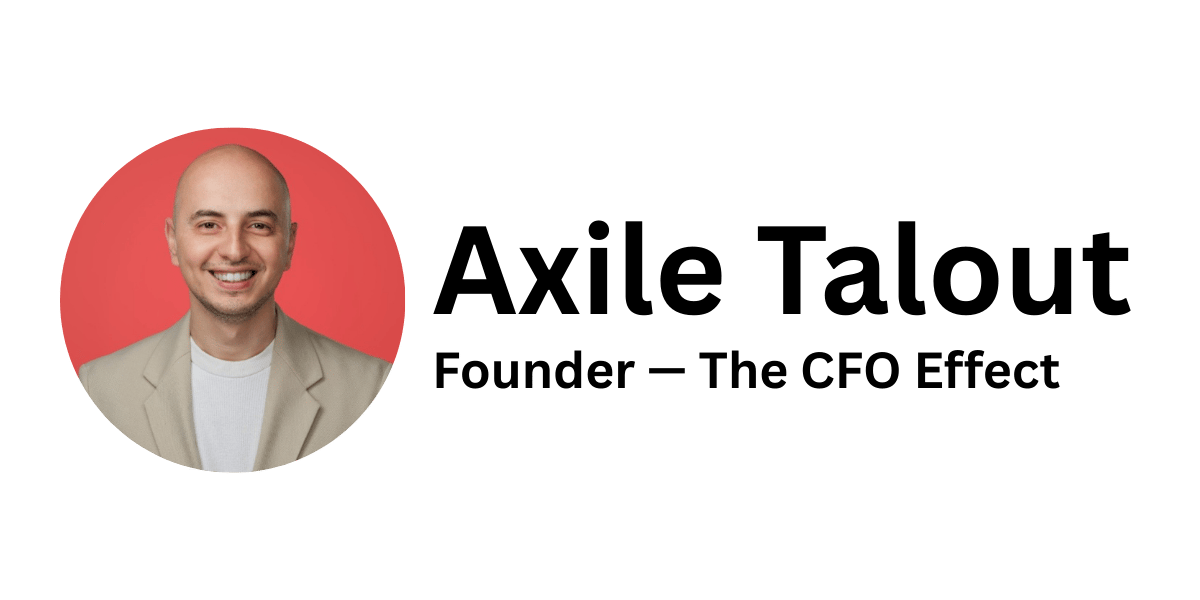Hey {{first_name|there}},
This week, we tackle a brutal truth:
Budgeting doesn’t drive strategy.
Capital allocation does.
And if you're still thinking about budgeting the same way you did 10 years ago — static templates, incremental lifts, and line-by-line debates — you're already behind.
Capital Allocation: First Principles
Capital allocation isn’t just about "who gets what."
It’s about how fast, how wisely, and how flexibly you deploy resources against a moving target.
If strategy defines where you want to go,
capital allocation defines how you survive the trip.
Here’s the problem:
Most companies treat capital like it’s permanent.
Department budgets lock it down.
Annual forecasts reinforce it.
Politics cements it.
But winning companies treat capital like it's liquid; flowing constantly toward the best opportunities, away from decaying ones.
🛠 THE CFO EFFECT PLAYBOOK (Part I)
How to Build a Real Capital Allocation System
When I think about building a true Capital Allocation OS, here’s the structure I’d use (and have used):
Step 1: Define Your Capital Buckets
Every dollar you deploy should fall into one of three buckets:

Without clarity on these 3 buckets, everything blurs into “spend.”
Step 2: Attach ROI and Risk to Every Dollar
Every request for capital should answer three simple questions:
Return: What measurable outcome are we targeting?
Risk: How confident are we in the assumptions?
Resilience: What happens if this bet fails and how much exposure do we carry?
If a budget owner can’t answer these questions without fumbling, the request isn’t ready.
Step 3: Set Trigger Points for Reallocation
Here’s the dirty secret of annual planning:
The world changes faster than your budget updates.
That’s why you need trigger points baked into your system.
Examples:
If CAC exceeds target by 20% for 2 months → Pause acquisition spends
If operating cash flow dips below $X → Initiate expense review
If a bet hits 80% of projected return early → Reinvest surplus elsewhere
Forecasts are useless without attached actions.
Step 4: Capital Reviews Every 45 Days
Forget about quarterly reviews.
Forget about endless meetings.
Set a simple Capital Sprint cadence:
30 to 45-day review cycle
Light touch, high impact
Only two questions:
Are our funded bets still the best use of our capital?
If not, where should we reallocate?
Use a 2x2 Heatmap to triage fast => Check it in my LinkedIn Post.
What Makes Capital Allocation Work Long-Term?
Velocity: Capital has to move faster than your competitors’ capital.
Discipline: No sacred cows. If a project stalls, reallocate without ego.
Visibility: KPIs must connect directly to capital performance, not vanity metrics.
A budget isn’t a map.
It’s a living, breathing playbook for opportunity management.
🚀 Ready to Execute?
Your 7-Day Challenge:
This week, pick one department you support.
Ask them to map their biggest 5 initiatives into:
Protect the Core
Expand the Core
Explore New Bets
Then ask:
Which of these would we double down on if we had an extra $500K? Which would we cut if we had to save $500K tomorrow?
You’ll instantly see where clarity (or delusion) lives.
Capital allocation is finance’s ultimate leadership move.
It’s where FP&A stops reporting and starts engineering growth.
Most companies won't change how they budget until it's too late.
You don’t have to be one of them.
🔜 Next Week: Working with the CEO - Becoming a strategic copilot
This the plan for next Sunday:
Vision without execution is hallucination.
The CEO sets the destination.
The CFO makes sure the plane doesn’t crash.
Next week, I’ll break down:
✅ How to build real operational trust with your CEO
✅ How to translate high-level vision into executable financial plans
✅ How to protect the CEO’s big bets, while keeping them grounded in reality
Because the best CFOs don’t just protect the business.
They make the founder’s vision real without letting ambition outrun execution.
If you want to be the right hand your CEO can’t imagine working without, you don’t want to miss it.
♻️ Share the Movement
If this helped you think differently, pay it forward:
👉 Share this on LinkedIn with a note like:
“ Finance isn’t just about tracking performance. It’s about driving it. And budgeting does not drive strategy, capital allocation does.”
Disclaimer:
This content is for informational and educational purposes only and should not be construed as financial, legal, or professional advice. Always consult with a qualified advisor before making any business or financial decisions. The author and publisher disclaim any liability for actions taken based on this content.
What did you think of this week’s edition?
Talk soon,

